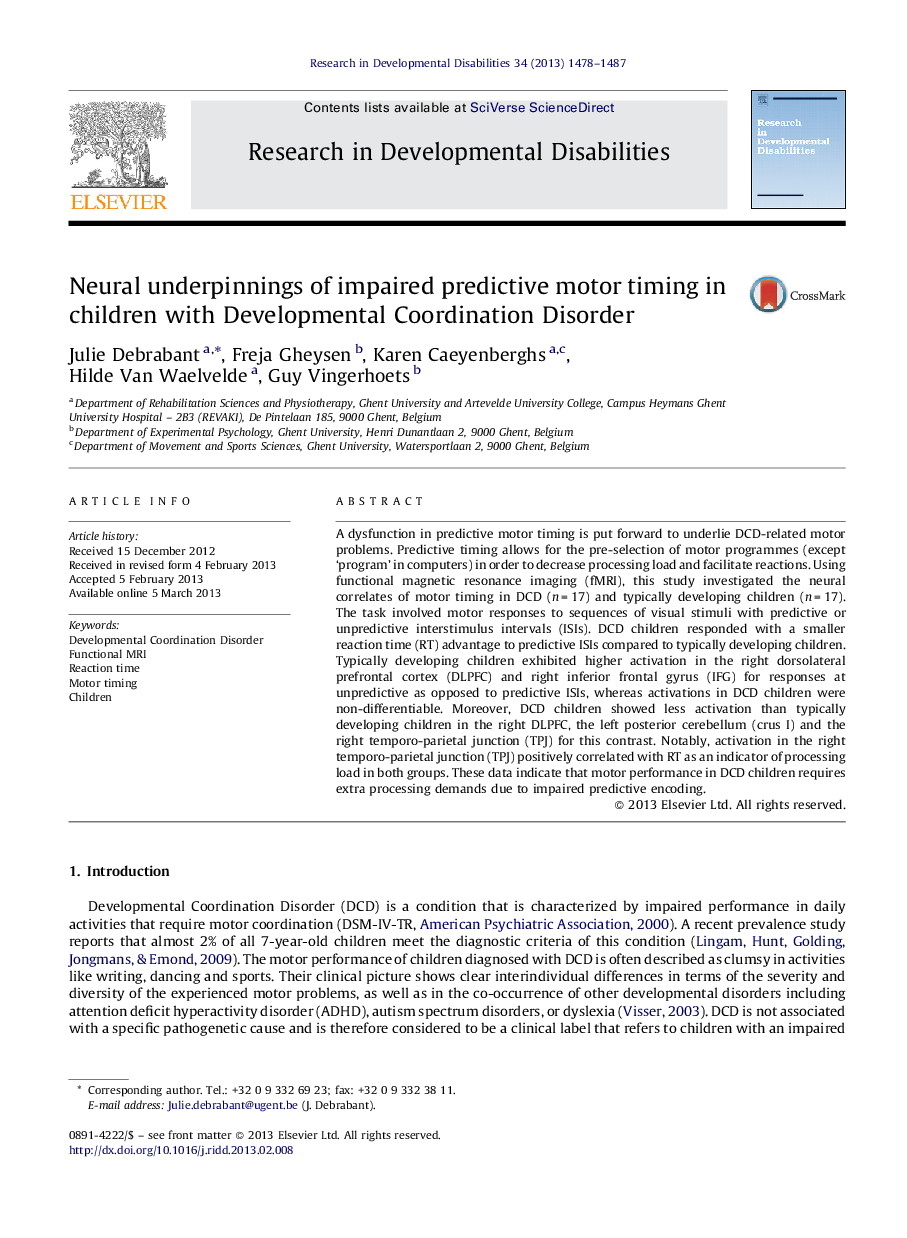ترجمه فارسی عنوان مقاله
پایه های عصبی زمان حرکتی پیش بینانه دچار اختلال شده در کودکان مبتلا به اختلال هماهنگی
عنوان انگلیسی
Neural underpinnings of impaired predictive motor timing in children with Developmental Coordination Disorder
| کد مقاله | سال انتشار | تعداد صفحات مقاله انگلیسی |
|---|---|---|
| 39431 | 2013 | 10 صفحه PDF |
منبع

Publisher : Elsevier - Science Direct (الزویر - ساینس دایرکت)
Journal : Research in Developmental Disabilities, Volume 34, Issue 5, May 2013, Pages 1478–1487
ترجمه کلمات کلیدی
اختلال هماهنگی رشدی؛ MRI عملکردی؛ زمان پاسخ؛ زمان بندی موتور؛ فرزندان
کلمات کلیدی انگلیسی
Developmental Coordination Disorder; Functional MRI; Reaction time; Motor timing; Children

